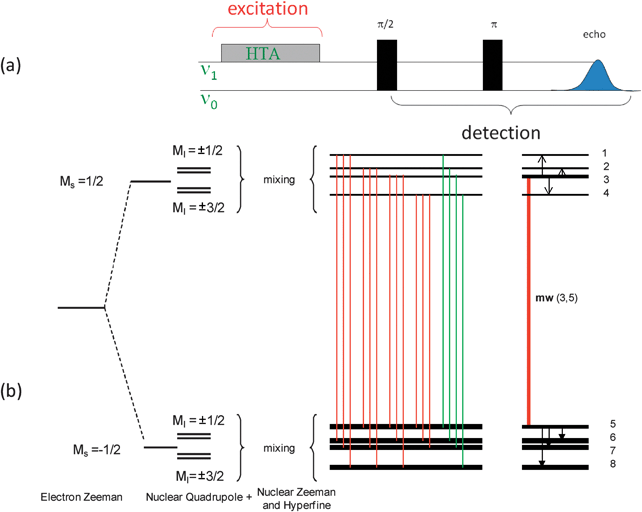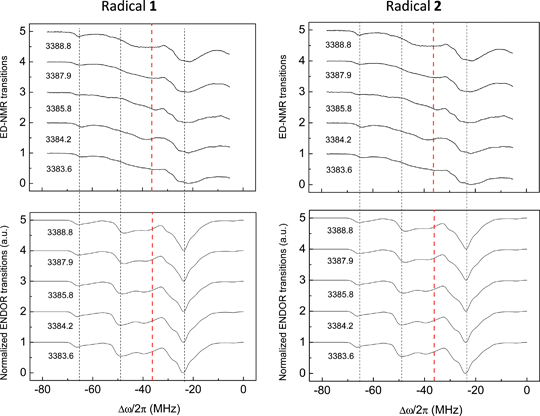
| Phys. Chem. Chem. Phys., 2011, 13 | |
Additions and corrections Correlation of the EPR properties of perchlorotriphenylmethyl radicals and their efficiency as DNP polarizers |
Debamalya Banerjee, Juan Carlos Paniagua, Veronica Mugnaini, Jaume Veciana, Akiva Feintuch, Miquel Pons and Daniella Goldfarb
Phys. Chem. Chem. Phys., 2011, 13, DOI: 10.1039/C1CP21970G. Amendment published 11th October 2011
The correct versions Fig. 4 and Fig. 5 are shown below.

Fig. 4 (a) Pulse sequence used in the ELDOR measurements in the present work. The observation pulses were always applied at 94.9 GHz. (b) A schematic energy level diagram of a S = 1/2, I = 3/2 system with a quadrupolar coupling e2qQ/(4I(2I − 1)h) on the order of the nuclear Larmor frequency and the hyperfine coupling. The thickness of the energy levels represents their populations, allowed EPR transitions are indicated in green and forbidden EPR transitions in red. On the right, the saturation of the 3–5 forbidden EPR transition is highlighted along with the six nuclear transitions associated with level 3 (in the MS = 1/2 manifold) and level 5 (in the MS = −1/2 manifold).

Top: ELDOR detected NMR spectra of radicals 1 and 2 recorded at different magnetic field positions noted in the figure in mT units. The 13C Larmor frequency is marked as a vertical dashed line in red. Bottom: the corresponding 35,37Cl calculated ENDOR spectra. See the text for details. The vertical dotted lines in black mark the positions of the three main peaks in the calculated spectra.17)
The Royal Society of Chemistry apologises for these errors and any consequent inconvenience to authors and readers.
Back to C1CP21656B